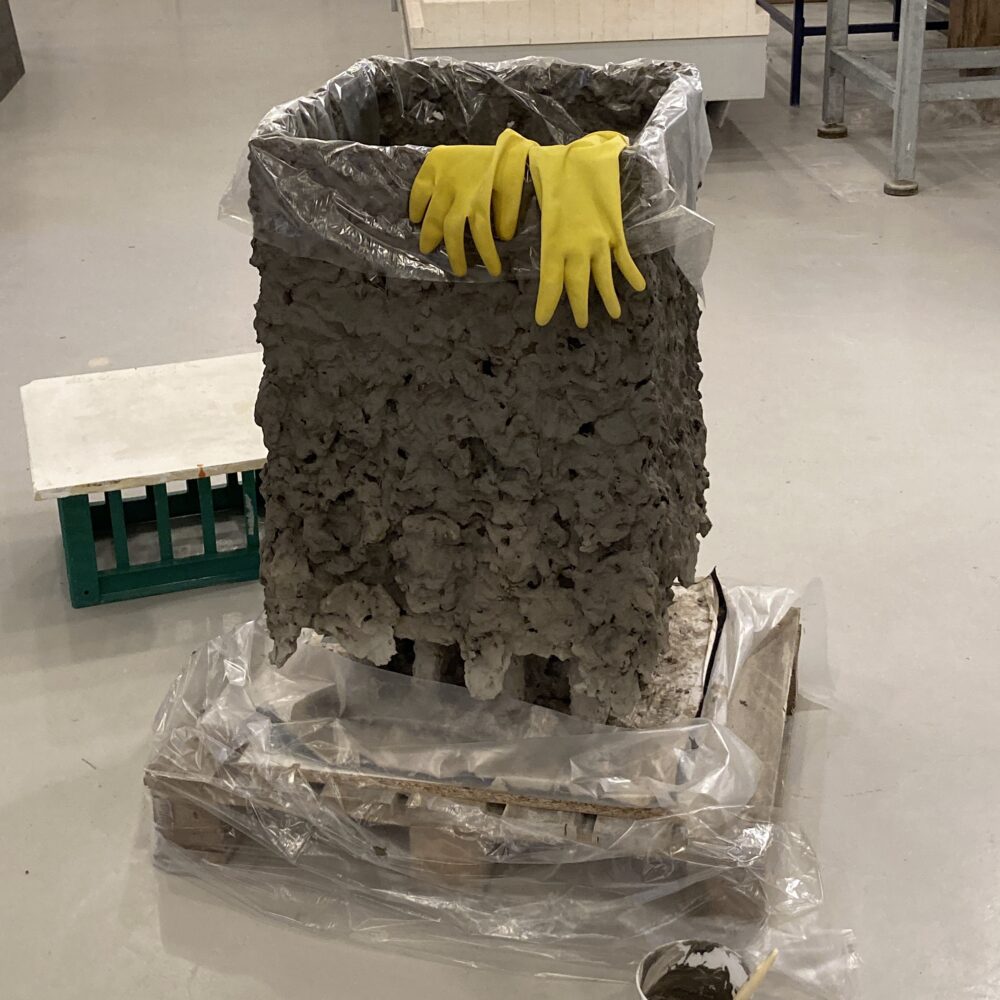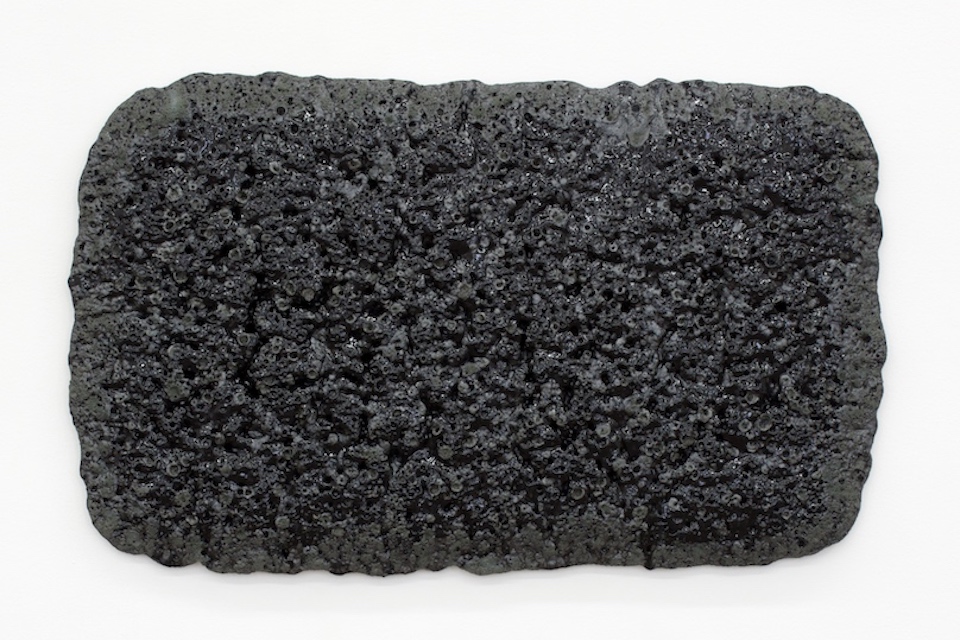
There is constantly something happening
Caroline Slotte (FI) and Gitte Jungersen (DK) 13 April – 20 May 2023
Pernille Stockmarr, curator at Designmuseum Danmark, gives the opening address at 17.00
Ceramics can be transformed in a split second if they are accidentally dropped and shatter. Or they can be slowly worn down – touched by hands, scratched by cutlery, their surface eroded by wind and weather. From the moment of creation, any object is also an incipient ruin, since, just as there is a ‘before’, there will also be an ‘after’. Over time, the objects are going to break up completely and enter into new physical manifestations.
Caroline Slotte’s works begin with antique porcelain plates. She sandblasts, grinds and cuts her way into the materi-
al, bringing new poetic images out of the familiar utilitarian objects. In her series Tracing, a miniature sandstorm has swept the original pieces, removing layer after layer of material. A landscape painted in cobalt blue, a sky, a cloud, a tiny person – the image is slowly eroded away, turning into white dust on the workshop floor. The flat blue painted scene gradually transforms into something akin to an imprint or an X-ray image, as if a memory of the image had sunk into the surface and is now slowly emerging as a three-dimensional recollection. In Under Blue Skies, all that remains is a few blue clouds. The clouds, which were originally added as background on the outer edge of the central image, move to the foreground, now accompanied by an outline of the elements that have been eroded away: a church, a tree, a floral border. The vanished areas can be glimpsed as negative forms in the white porcelain body.
In Gitte Jungersen’s large glaze objects, creation and destruction seem like two extremes that are closely connected. Piece #2 and Piece #3 consist of different glazes poured out in thick layers. Usually, even on a large sculpture, the glaze is only present as a thin layer, but here, the glazes take on a format that mirrors the human body. Like a blown-up detail or something seen through a microscope. All the glazes are coloured with cobalt oxide, which in the chemical make-up of the different glazes unfolds in varying colour shades and textures, from a greyish blue lava-like mass to a deep blue high-gloss shine. Glaze comes into being when different raw minerals coalesce and transform, becoming something new as a result of the firing’s dramatic, destructive and disintegrating forces. The transformation which occurs during the firing is retained as a frozen moment of a dynamic dimension that is felt and attracts like a quivering undertone in the finished work.





























